Discover 10 hidden attractions, cool sights, and unusual things to do in Beverley (United Kingdom). Don't miss out on these must-see attractions: Beverley Minster, Beverley Racecourse, and Beverley Bar. Also, be sure to include Beverley Guildhall in your itinerary.
Below, you can find the list of the most amazing places you should visit in Beverley (England).
Table of Contents
Beverley Minster
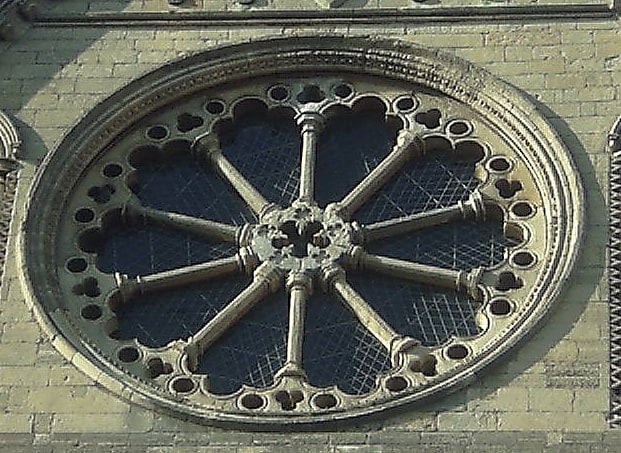
Parish church in Beverley, England. Beverley Minster in Beverley, East Riding of Yorkshire, is a parish church in the Church of England. It is one of the largest parish churches in the UK, larger than one-third of all English cathedrals and regarded as a gothic masterpiece by many.
Originally a collegiate church, it was not selected as a bishop's seat during the Dissolution of the Monasteries; nevertheless, it survived as a parish church and the chapter house and the attached church of St Martin were the only major parts of the building to be lost. It is part of the Greater Churches Group and a Grade I listed building.[1]
Address: 38 Highgate, HU17 0DN Beverley
Beverley Racecourse

Sports venue in England. Beverley Racecourse is a thoroughbred horse racing venue located in the town of Beverley in the East Riding of Yorkshire, England.
Racing in Beverley can be documented as far back as over 300 years ago, and the founding of The Jockey Club in 1752 really formalised its presence in the town. With the founding of The Jockey Club, the occasional racing at nearby Westwood Pasture was recognised, and Beverley Racecourse was founded. An annual meeting at Beverley was first established in 1767. Before that races had only occasionally been run there. Then, for a short period between 1798 and 1805 racing once again stopped. Later in the 19th century a three-day meeting was taking place annually in the week after York's May meeting. In 2012, Beverley hosted racing on 19 days. Its most prestigious races being two Listed races - the Hilary Needler Trophy for two-year-olds in May and Beverley Bullet Sprint over 5 furlongs in August for three-year-olds and up.
The racecourse is a right-handed flat course, that is just over 1 mile 3 furlongs. It is predominantly flat but with a stiff, uphill finish and tight turns. Beverley has the most pronounced "draw bias" on a UK racecourse on its 5 furlong course. The sharp right hand bend and the fact that the ground runs away to the left make a low draw (i.e. on the inside rail) much more advantageous than a high draw (i.e. on the wide outside and on ground sloping right to left).
The first grandstand was commissioned for the racecourse on 22 May 1767 at a cost of £1,000. A £90,000 stand was opened in Tattersalls enclosure in 1968.
In August 2018, it was announced that planning permission was being sought for a £4.8 million grandstand to replace the existing 1960s structure, with an expected completion of April 2021.
It has been described as an "unpretentious but agreeable" racecourse.
As of July 2019, 10 horses have died at the racecourse since 2007.[2]
Address: York Road, HU17 8QZ Beverley
Beverley Bar
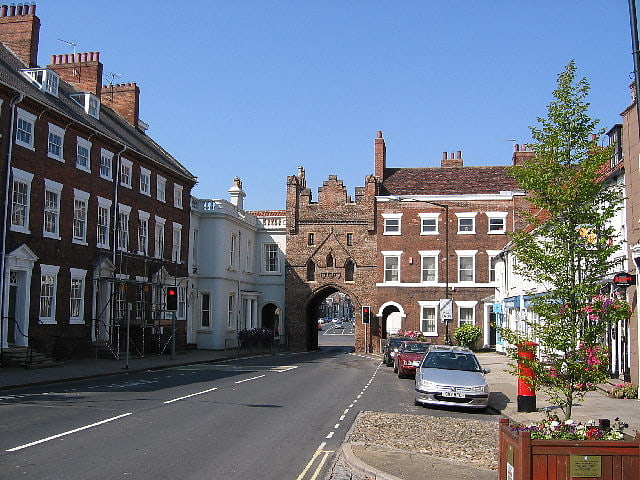
Beverley Bar or Beverley North Bar is a 15th-century gate situated in Beverley, East Riding of Yorkshire, England. It is designated a Grade I listed building and is now recorded in the National Heritage List for England, maintained by Historic England. The bar is located between North Bar Without and North Bar Within, close to Beverley St Mary's and abuts buildings on either side. Traffic is limited to single file through the bar arch and controlled by a set of lights.[3]
Beverley Guildhall

The Guildhall is a municipal facility at Register Square in Beverley, East Riding of Yorkshire, England. It is a Grade I listed building.[4]
Address: Toll Gavel, Beverley
Treasure House
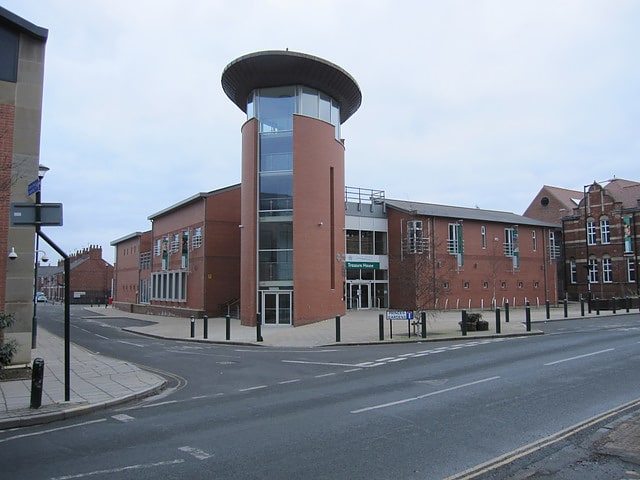
Archive in Beverley, England. The Treasure House is a cultural centre operated by the East Riding of Yorkshire Council in the town of Beverley in the East Riding of Yorkshire, England. The centre acts as the main hub for heritage and information services, and contains the East Riding Archives and Local Studies, the Beverley Library, a Museum and the Beverley Art Gallery. The building also contains a coffee lounge and gift shop. The top floor, known as 'The Tower', serves as an elevated sightseeing platform, showcasing 360 degree views of the Beverley Minster and the town of Beverley.[5]
Address: Champney Road, HU17 8HE Beverley
11 Ladygate
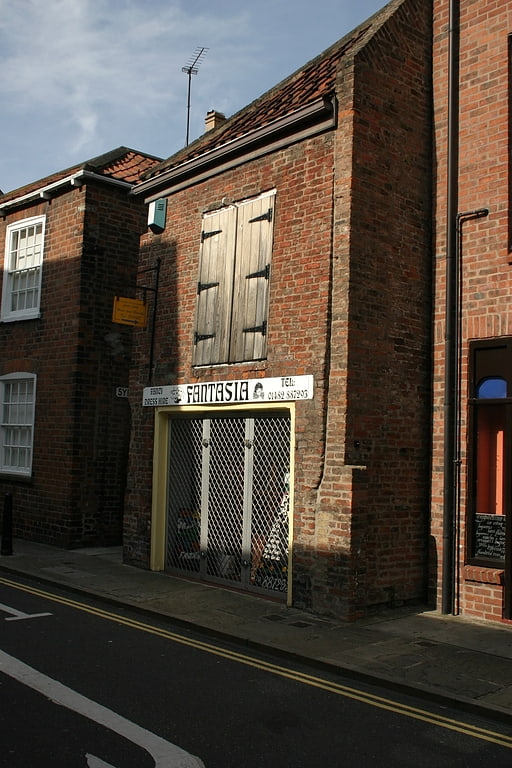
11 Ladygate is located close to the market place and centre of the historic town of Beverley, East Riding of Yorkshire, England. This unassuming building represents what would have been normal and common in the middle ages when the town prospered from the wool trade. Ladygate has another timber-framed building of 16th or 17th century origin at 19-21 Ladygate. The street which runs the full length of the market place is predominately consists of later 18th and 19th century dwellings and businesses.
This 14th-century building is constructed from timber-frames brick and a clay pan-tile roof. The limited 13 feet width of the property was determined by the beam of the Hanse cogs bringing timber from Scandinavia and Poland into the docks probably at Hull or Beverley Beck. This two storey shop has a loading bay above the shop front and a wooden staircase at the rear. The timber framing can be seen along the passageway to the left of the building.
The shop keeper would have lived above the business and as the property would have been let as just the walls and floor, the tenant would have taken the staircase with them when the lease ended. This building's timber framing has been dated by taking a core of wood from its timber. The sample would be then examined under a lower power microscope to compare the width and number of tree-rings to that of a known date. This is known as Dendrochronology the scientific method of dating using the annual nature of tree growth. The building is listed as Grade II.[6]
Beverley and Barmston Drain
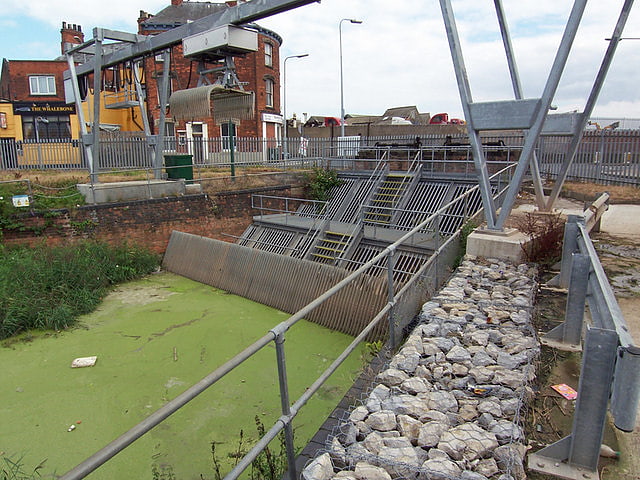
River in England. The Beverley and Barmston Drain is the main feature of a land drainage scheme authorised in 1798 to the west of the River Hull in the East Riding of Yorkshire, England. The area consisted of salt marshes to the south and carrs to the north, fed with water from the higher wolds which lay to the north, and from inundation by tidal water passing up the river from the Humber. Some attempts to reduce the flooding by building embankments had been made by the fourteenth century, and windpumps appeared in the seventeenth century. The Holderness Drainage scheme, which protected the area to the east of the river, was completed in 1772, and attention was then given to resolving flooding of the carrs.
Embanking the River Hull, and carrying water away from the carrs in a lower level channel was suggested by several engineers, but there was opposition to making the scheme really efficient. Some came from the Holderness Drainage, who insisted that any embankments must ensure that land to the west of the river flooded before their own area was threatened, while an outfall to the Humber was resisted by the Port of Hull, who wanted the water to enter the river to sluice silt from its mouth, known as the Old Harbour. The Beverley and Barmston Drainage Act was finally obtained in 1798, and work began. Water from the north east of the region was diverted to a new sea outfall at Barmston, and 23 miles (37 km) of drainage cuts were constructed, the main channel running broadly parallel to the river, but following a straighter course.
Although more efficient than the Holderness scheme, flooding remained a problem, because of the restrictions place on the height of embankments. A route for an outfall to the Humber was blocked by numerous roads and railways, an attempt to dredge the Old Harbour in 1864 proved disastrous, and pumping failed, because the water overtopped the low banks further downstream, and re-entered the drain. However, in 1880, agreement was reached with Holderness Drainage, and a joint scheme of dredging the river and raising the banks on both sides of it ensued. Steam pumping stations at Arram Beck, later replaced by one at Wilfholme, and at Hempholme contributed to the success of the land drainage scheme.
More recently, the organisational structure has changed. Henry VIII's Statute of Sewers, dating from 1531, was swept away by the Land Drainage Act 1930, and responsibility passed through six bodies, ending with the Environment Agency in 1995. Local drainage channels were managed by an internal drainage board, and again responsibility has changed as the three IDBs managing the area have gradually merged. Steam pumping was replaced by diesel, and subsequently by electric pumps.[7]
Beverley town walls

Beverley's town walls are a sequence of defensive structures built around the town of Beverley in the East Riding of Yorkshire, England.[8]
Address: N Bar Within, Beverley
Beverley Friary

Beverley Friary is a row of buildings in Beverley, East Riding of Yorkshire, England. The buildings are a Grade II* listed building that since 1984 have been used as a youth hostel. They are thought to be either part of an old Dominican friary, or to have been built on the site of the friary using stone from the site.[9]
Museum of Army Transport
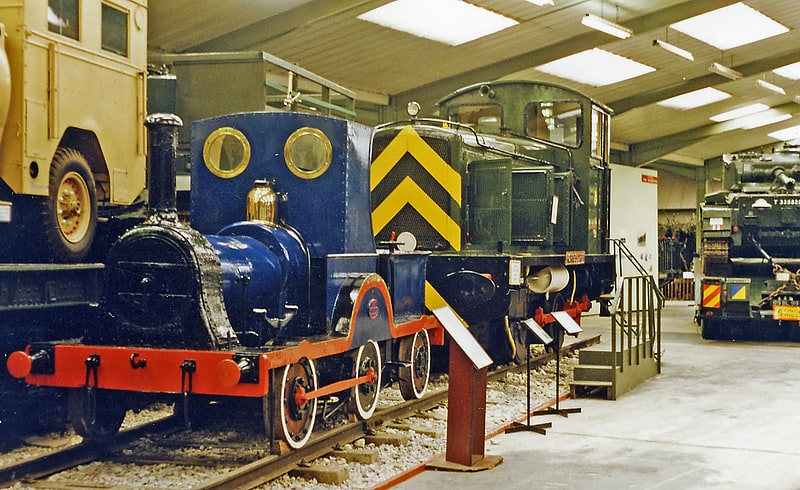
Museum in the United Kingdom. The Museum of Army Transport was a museum of British Army vehicles in Beverley, East Riding of Yorkshire, England.
The collection included a diverse collection of armoured vehicles and support vehicles, many of which were part of the National Army Museum, as well as railway locomotives and rolling stock, and the only remaining Blackburn Beverley, aircraft XB259, which was the first production Beverley.[10]